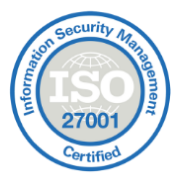A Learning Management System (LMS) is a digital platform that allows language schools and teachers to create, manage, and deliver language learning courses online. LMSs offer a range of tools and features that can make language learning more engaging, interactive, and effective. For example, teachers can create multimedia content such as videos, audio files, and quizzes, which students can access at their own pace and on their schedule. LMSs also provide opportunities for real-time communication and collaboration between students and teachers and tools for tracking student progress and assessing learning outcomes.
Overall, LMSs can help language schools and teachers create more flexible and personalized learning experiences for their students while streamlining administrative tasks and reducing costs.
The Impact of LMS on Language School Success
Improved student engagement:
LMSs provide various interactive and multimedia resources that can make language learning more engaging and effective for students, such as videos, quizzes, and gamification elements.Personalized learning experiences:
LMSs enable language schools to create customized learning paths for each student based on their needs, preferences, and learning styles, resulting in a more personalized and effective learning experience.Enhanced administrative efficiency:
LMSs can streamline administrative tasks such as course scheduling, grading, and progress tracking, freeing up time for instructors to focus on teaching and course development.Real-time collaboration and communication:
LMSs provide real-time collaboration and communication opportunities between students and instructors, enhancing the social and interactive aspects of language learning.Data-driven decision-making:
LMSs provide valuable data and insights into student performance and learning outcomes, enabling language schools to make data-driven decisions and continuously improve their courses and instructional approaches.Benefits for language teachers
Improved course content management:
LMSs allow language teachers to easily manage and organize course content, such as lesson plans, quizzes, and multimedia resources, in a centralized location. Better student performance tracking: LMSs provide tools for tracking and analyzing student performance data, such as quiz and test results, enabling language teachers to identify areas where students may need additional support or guidance.More effective student communication:
LMSs enable language teachers to communicate with students more efficiently and effectively, using messaging systems, discussion boards, and real-time chat features.Increased student motivation:
LMSs provide a range of gamification and reward features, such as badges and certificates, that can help to motivate students and encourage them to engage with course content.Access to a global community of language teachers:
LMSs can provide access to a global community of language teachers through online forums, webinars, and other networking opportunities, allowing language teachers to share ideas, resources, and best practices with colleagues from around the world.What makes an LMS ideal for language teaching?
An LMS for language school is ideal because it provides a centralized platform with multimedia resources for a more engaging and personalized learning experience. It also offers valuable data insights, collaboration and communication tools, and the ability to create customized learning paths for each student. It allows language teachers to efficiently manage course content, automate administrative tasks, and track student progress. It also provides access to a global community of language teachers, offering opportunities for networking, professional development, and resource sharing
How does an LMS support language learning?
Examples of how language schools have used an LMS to their advantage
Here are some examples of how language schools have used an LMS to their advantage:
The New School in New York City implemented an LMS to provide students with a more flexible and interactive learning experience. They used the LMS to deliver multimedia resources, such as videos and podcasts, and to provide online assignments and assessments. The LMS also allowed students to collaborate with teachers in real time.
The Language Gallery, a language school in the UK, implemented an LMS to enhance the efficiency and consistency of their language courses. They used the LMS to automate administrative tasks, such as attendance tracking and grading, and provide students with personalized feedback and support.
Eton Institute, a language school in Dubai, implemented an LMS to expand its reach and provide language courses to students in remote locations. They used the LMS to deliver online language courses and to provide virtual classrooms with real-time interaction and collaboration tools.
Conclusion:
LMS is a valuable tool for language schools and teachers that can enhance the learning experience for students, streamline course management, and provide valuable data insights. With its range of features and benefits, an LMS has the potential to revolutionize language teaching and learning in the 21st century. Paradiso LMS is an excellent option for language schools. With its intuitive interface, extensive feature set, and customizable options, Paradiso LMS can help language schools to create engaging courses, track student progress, and provide a seamless learning experience.
























